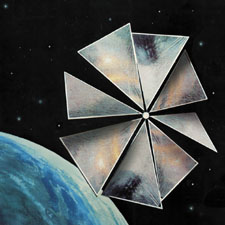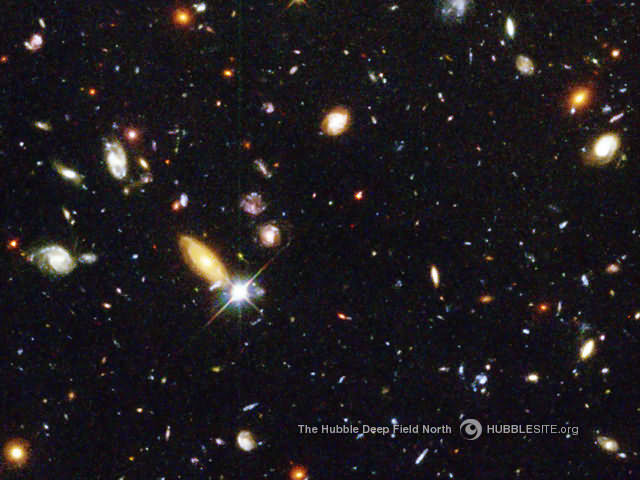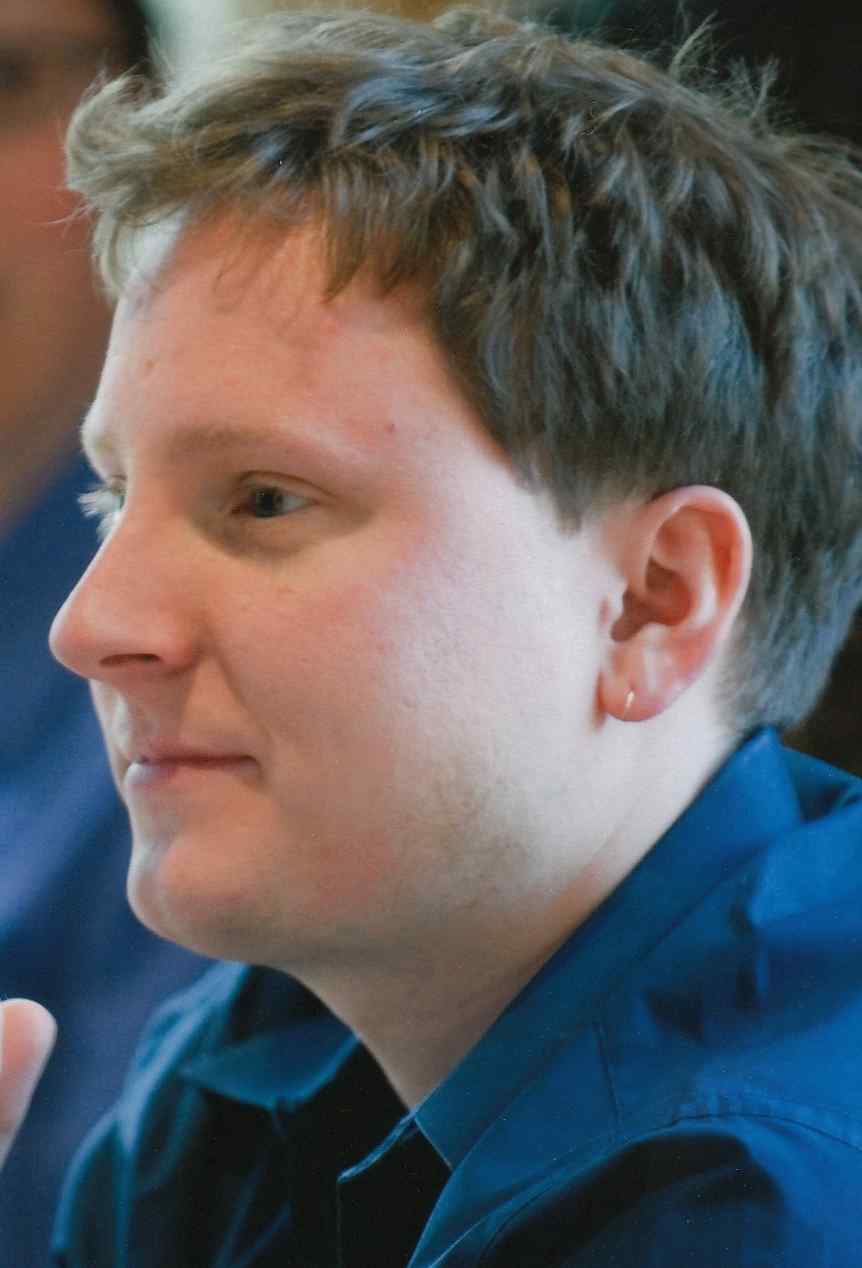Physics 2020: Fall '10
General Physics 2 (Electricity & Magnetism, and Optics)
MWF 11:00-11:50 Duane G1B20 (Section 100)


On the left: light carries momentum as well as energy, so when it bounces off a mirror the mirror feels a force. This bit of physics is the basis for solar sails, a scheme of spacecraft propulsion. If humans ever make it beyond our solar system, they may be propelled by a solar sail. The Planetary Society is trying to build one.
On the right: This is my all-time favorite image taken by the Hubble Space Telescope - but it is not a picture of stars. It's called the " deep field " image,
and it was taken by aiming the Hubble away from the Milky Way, pointing towards a dark patch with no stars....which means (almost) everything you see in that
image is a galaxy! It's a profoundly humbling image - each dot is an entire galaxy of stars!
The Hubble Space Telescope is a
spectacular engineering success. At its heart, though, is a fairly simple
optical imaging system, a telescope built with mirrors. Although by no means
the largest telescope in the world, the advantages of being above Earth's
atmosphere have provided lots of important data (and popular, beautiful photographs.)
- Sat, Dec 11: Prof Pollock, DeWolfe, and TA Adam Light will hold their regular Monday office hours in the help room (Adam starts at 9 AM, Prof DeWolfe is there at 10, Prof Pollock at noon)
- Sat, Dec 11: Please see the "exams and grades" link (upper left) for more info about the final, which is Tuesday evening.
- Sat, Dec 11: The review concepttests from last class now have solutions, see "Concept Tests" link (upper left, partway down the page)
- Fri, Nov 19: Exam and course scores are posted to CULearn.
- Thurs Nov 18: Written HW #7 is now online, due Friday Dec 3. CAPA #13 is up, due Tuesday Nov 30, midnight (really, Wed Dec 1 8 AM) (Both those due dates are 24 hours later than usual, due to the break)
- Please register your clicker if you haven't already done so.
Older class announcements can be found here, in our course webpage #1, and #2 (just after exam 2), and the third. (just after exam 3)

Prof. Steven Pollock (Lectures)
Office: Duane F-1013
M, F after class, then I will move to the help room until 1 PM |

Prof. Oliver DeWolfe (Labs)
Office: Duane F-327
M, Th 10-11 in the HelpRoom |